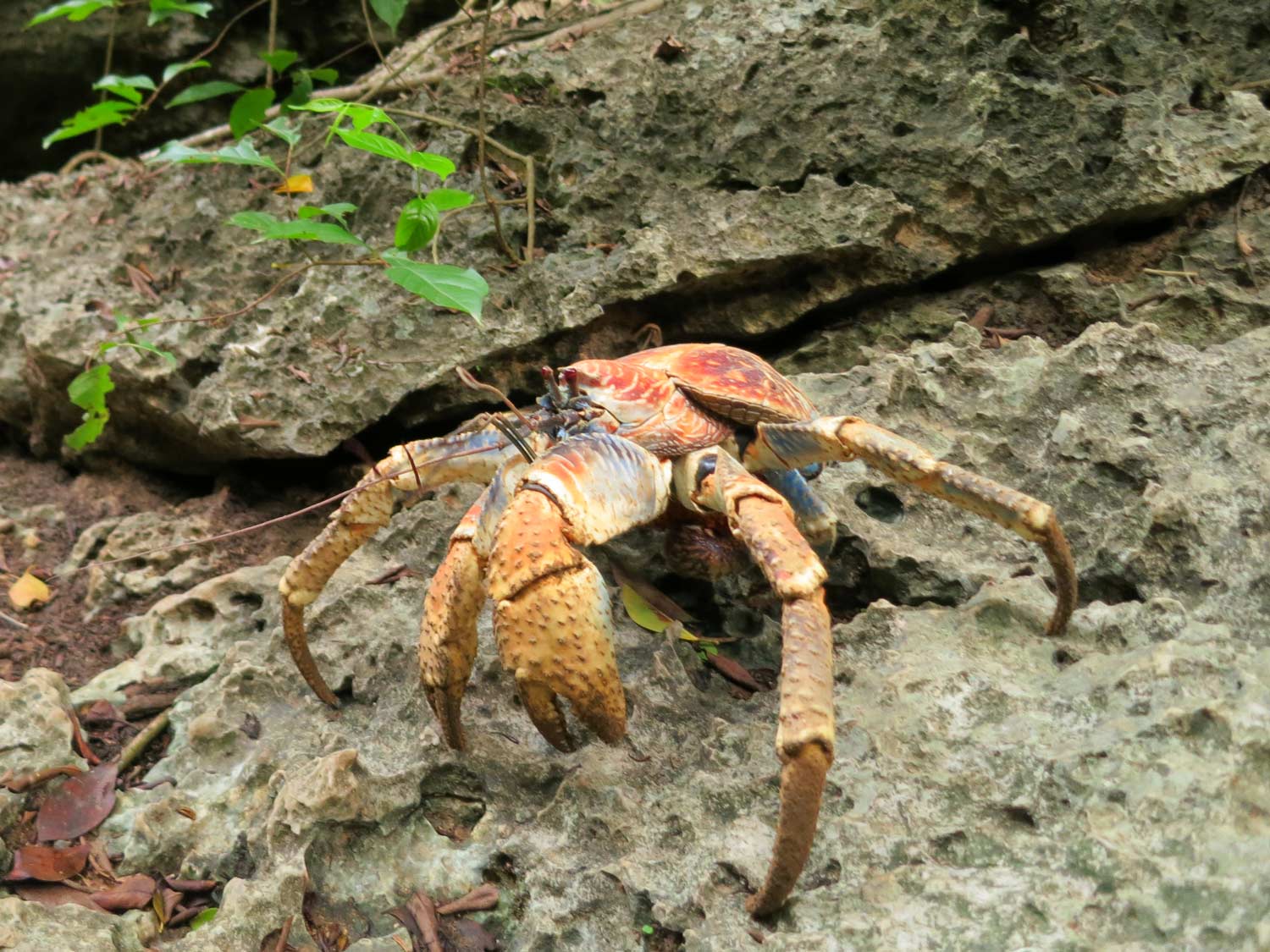Biodiversity #14 – There are over 1,100 species of hermit crab, both terrestrial and marine, which typically processes an asymmetrical soft abdomen which it conceals for protection in an empty gastropod (snail) shell. Most are referred to a ‘left-handed’ as their left claw is bigger than their right. The banner image above is a Hairy Red Hermit Crab.
Hermit crab species range in size and shape, from a few millimetres long to the shell-less coconut or robber crab (found on Australia’s Christmas Island), which is the world’s largest terrestrial invertebrate – below.
Hermit crabs are social animals that in the wild can be found in colonies numbering over a hundred. Several hermit crab species use vacancy chains to find new shells: when a new, bigger shell becomes available, hermit crabs gather around it and form a kind of queue from largest to smallest. When the largest crab moves into the new shell, the second-biggest crab moves into the newly vacated shell, thereby making its previous shell available to the third crab, and so on.
Though we think hermit crabs are fun to play with, I’m not so sure they do!
<= Previous Biodiversity #13 Octopus Biodiversity #15 Wobbegong Next =>




